Business Hours
Monday 9 AM – 5 PM
Tuesday 9 AM – 5 PM
Wednesday 9 AM – 5 PM
Thursday 9 AM – 5 PM
Friday 9 AM – 5 PM
Saturday: By Appointment Only
Sunday: Closed
Boxwoods, with their lush evergreen leaves and remarkable adaptability, have long been a cornerstone of garden design, cherished by novices and experts alike. These versatile shrubs not only bring year-round color and structure to gardens but also serve a multitude of design and practical purposes. From creating elegant borders and hedges to crafting intricate topiaries, boxwoods offer endless possibilities for enhancing outdoor spaces
In this comprehensive guide, we will delve into everything you need to know about cultivating and maintaining boxwoods. From selecting the right species to mastering the art of pruning, you’ll discover how to make the most of these durable shrubs in your garden. Whether you’re looking to add privacy, structure, or simply a touch of greenery, boxwoods are the perfect choice for any landscape.
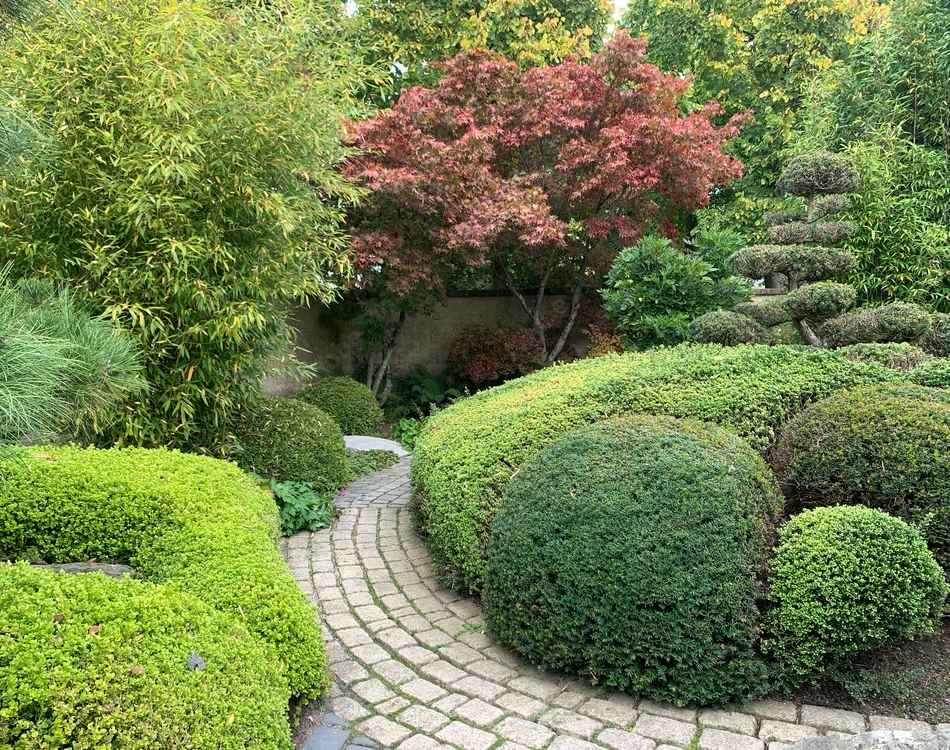
Boxwoods bring unparalleled aesthetic appeal to gardens with their dense, lush foliage that remains vibrant throughout all seasons. The deep green leaves of boxwoods serve as a perfect backdrop for flowering plants, while their ability to be shaped into various forms—from globes and pyramids to undulating hedges—allows for creative expression in landscape design. This evergreen shrub’s year-round presence ensures that gardens retain their beauty even in the colder months, making them a cornerstone for any perennial garden.
One of the primary reasons gardeners favor boxwoods is their low maintenance requirements. These hardy shrubs thrive in a variety of conditions with minimal care, resisting most pests and diseases. Additionally, boxwoods are highly versatile, capable of flourishing in both sun and shade, and they adapt well to different pruning schedules and techniques. Their robust nature makes them ideal for both formal and informal landscapes, providing structure and elegance with very little effort.
The diversity of boxwood varieties is another aspect that makes them so beloved by gardeners and landscapers alike. With over 90 species and hundreds of cultivars to choose from, there is a boxwood to suit almost any climate and garden style. From the compact ‘Green Velvet’ that excels in colder zones to the tall and stately ‘American Boxwood’ suited for warmer regions, each variety offers unique characteristics that can be tailored to specific landscaping needs. This varietal diversity not only allows for customized garden designs but also ensures that gardeners across different regions can enjoy the benefits of these versatile shrubs.

Successfully planting boxwoods begins with careful planning and preparation. Whether you’re creating a formal hedge, a feature topiary, or simply adding some structure to your garden beds, understanding the basics of site selection, soil preparation, and proper planting techniques will ensure your boxwoods thrive from the start.
The ideal location for your boxwoods will depend on the variety, but most thrive in areas with partial to full sun exposure. Boxwoods require at least four to six hours of sunlight daily to maintain their vibrant color and dense foliage. Avoid low-lying areas where water collects, as boxwoods do not tolerate wet feet and can suffer from root rot in poorly drained soils. Instead, choose a site with well-drained soil, slightly elevated if possible, to promote healthy root growth. For more information on the optimal conditions for planting boxwoods, visit the American Boxwood Society frequently asked questions.
Boxwoods perform best in loamy, well-drained soil with a pH of 6.0 to 7.5. Before planting, take the time to prepare your soil by removing any weeds, debris, and large stones. Add organic matter such as compost or well-rotted manure to enrich the soil and improve its structure. If your soil is particularly clayey or sandy, incorporate additional amendments like peat moss or coarse sand to adjust its texture. Testing soil pH and adjusting it with lime or sulfur based on the requirements of the boxwood variety you choose is crucial for optimal growth.
Planting boxwoods correctly is essential for their success. Begin by digging a hole twice as wide and just as deep as the root ball of your plant. This allows the roots to spread easily and establish quickly. Gently remove the boxwood from its container and inspect the root ball. If roots are densely packed or circling, lightly tease them apart with your fingers. Place the plant in the center of the hole, ensuring that the top of the root ball is level with the surrounding soil surface. Backfill the hole with the amended soil, firming it down as you go to eliminate air pockets. Water the plant thoroughly after planting to settle the soil around the roots and provide essential moisture for growth.
Boxwoods are not just versatile in terms of aesthetics but also in their adaptability to various soil conditions. However, to truly thrive, ensuring the right soil conditions is crucial. Boxwoods perform best in well-drained, loamy soils with a slightly acidic to neutral pH
The ideal pH for boxwoods is between 6.0 and 7.0. This pH range helps the plants absorb nutrients more efficiently and enhances their resistance to diseases. You can easily test the soil’s pH using a home testing kit from any garden center. If your soil is too alkaline, sulfur can be applied to lower the pH, while lime will help raise the pH of overly acidic soils.
To create the perfect growing environment, amending your soil is essential. If your garden has heavy clay, adding organic matter such as compost, peat moss, or well-rotted manure will improve its drainage and aeration. For sandy soils, organic matter helps retain moisture and nutrients, crucial for healthy boxwood growth. Regular amendments keep the soil fertile and structurally sound, supporting robust plant development
Continuing to care for the soil after planting is vital for maintaining the health of your boxwoods. Applying organic mulch like bark chips or shredded leaves around the plants helps conserve moisture, regulate soil temperature, and suppress weeds. Ensure the mulch is kept a few inches from the plant stems to prevent moisture buildup and potential rot. Regularly re-testing the soil pH and nutrient levels every few years can guide your soil management practices, ensuring your boxwoods stay healthy and vibrant.

Proper watering is critical for boxwoods to thrive, especially given their sensitivity to both over and under-watering. Typically, boxwoods require about 1 inch of water per week, whether from rainfall or manual watering. During hot, dry periods, this frequency may need to increase to ensure the soil remains moist but not waterlogged. Always water deeply at the base of the plants, avoiding overhead sprinkling to minimize the risk of leaf diseases. A good practice is to check the soil moisture by feeling it up to a few inches deep; it should be moist, not saturated.
Fertilization is essential to maintain the lush, dense foliage that boxwoods are known for. The ideal time to fertilize is in the early spring before new growth begins and again in mid-autumn to prepare the plants for winter. Use a balanced, slow-release fertilizer formulated for woody plants like boxwoods, with an NPK ratio of approximately 10-10-10. Apply the fertilizer according to the package instructions, spreading it evenly around the base of each plant, and then water thoroughly to help incorporate the nutrients into the soil.
Adjust your watering and fertilization schedule based on seasonal changes and the specific needs of your plants. In seasons of excessive rain, reduce manual watering to prevent soil waterlogging, which can lead to root rot. Conversely, in drought conditions, increase watering frequency and consider additional mulch application to help retain soil moisture. Regularly monitor your boxwoods for signs of nutrient deficiency or excess, such as yellowing leaves or stunted growth, and adjust your fertilization plan accordingly to address these issues.
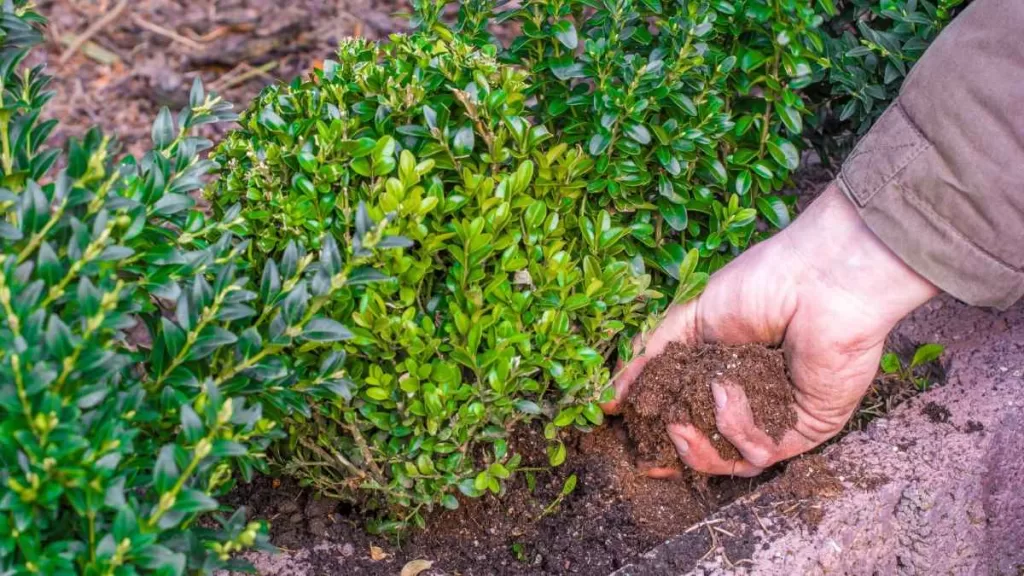
The timing of your pruning can greatly impact the health and growth pattern of your boxwoods. The optimal pruning period for boxwoods is late winter or early spring, just before the new growth starts. This timing allows for the plant to heal quickly and use the growing season to fill out and form its shape. However, light pruning can be done throughout the year to correct any irregularities or remove dead branches.
Pruning is not only about shaping; it’s also essential for the health of your boxwoods. Start by removing any dead or diseased branches, which will help prevent the spread of decay and pests. Thinning out dense areas improves air circulation, which is crucial in preventing fungal diseases. Always use sharp and clean tools to make clean cuts, which help the plant heal faster and reduce stress
When it comes to shaping boxwoods, the goal is to achieve a natural yet controlled form that complements your garden’s aesthetic. For hedges, use straight lines and angles to create a formal look. For individual shrubs, maintain a more natural shape by following the plant’s original growth habit. To encourage bushier growth, trim the tips of the branches, which stimulates new growth throughout the plant.
Maintenance pruning is all about keeping your boxwoods looking their best throughout the year. Regularly inspect your plants and snip away any stray or overgrown branches. This not only keeps your boxwoods in the desired shape but also encourages thicker growth by allowing light to reach the interior of the plant. Remember, less is more with maintenance pruning; take your time to assess and make thoughtful cuts for the most beautiful results
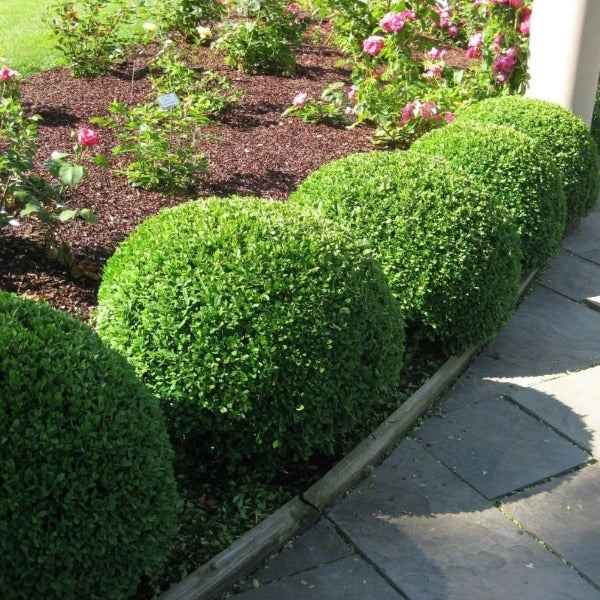
Boxwoods, while hardy, can fall prey to several common pests that threaten their health. The boxwood leafminer is a frequent culprit, causing the leaves to blister and appear unsightly. Spider mites, another common pest, can cause foliage to turn yellow and stippled due to their feeding. Vigilance in monitoring for the telltale signs of these pests is key. Regular inspections, especially under the leaves, and treating with appropriate horticultural oils or insecticidal soaps can help keep these pests at bay
Diseases such as boxwood blight or Volutella can cause significant damage to your plants, leading to defoliation and dieback. Boxwood blight is identified by dark leaf spots and black streaks on the stems, while Volutella presents with pinkish spore masses on the undersides of leaves. To prevent these diseases, ensure proper spacing for air circulation and avoid overhead watering. If disease occurs, infected debris should be removed and destroyed, and fungicide may be applied as necessary following local extension service recommendations.
Prevention is always preferable when it comes to pests and diseases. Keeping your boxwoods healthy with proper fertilization, watering, and pruning is the first defense against issues. Clean up fallen leaves and debris to minimize the risk of disease, and consider a preventative fungicide treatment in early spring for areas prone to boxwood blight. Always sanitize pruning tools between cuts to prevent the spread of disease.
Integrated Pest Management (IPM) is a sustainable approach to managing pests that combines biological, cultural, physical, and chemical tools in a way that minimizes economic, health, and environmental risks. For boxwoods, this might include introducing beneficial insects to control pest populations, using disease-resistant varieties, and applying chemicals only as a last resort and in a targeted manner.
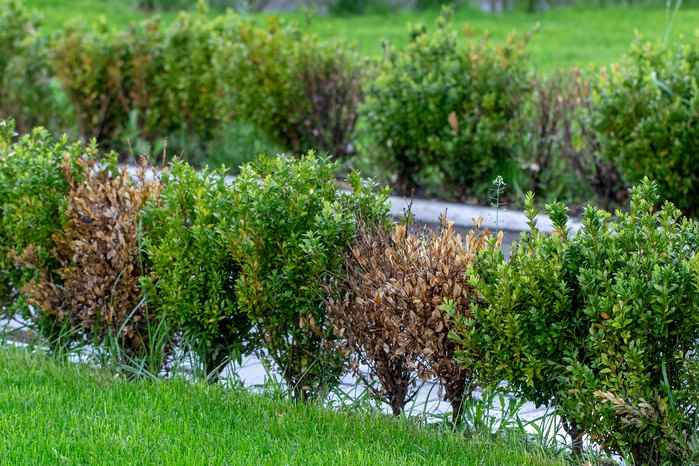
While boxwoods are a staple in many gardens for their beauty and versatility, pet owners should be aware of their toxicity. All parts of the boxwood plant contain alkaloids that can be harmful if ingested by pets. Symptoms of boxwood poisoning in animals include vomiting, diarrhea, and in severe cases, seizures or respiratory failure. It’s crucial for pet owners to understand the risks and recognize the signs of poisoning promptly.
To keep your furry friends safe, it’s advisable to take preventive measures if you have boxwoods in your garden. Consider planting boxwoods in areas that are out of reach for pets or creating barriers to restrict access. When pruning or handling boxwoods, remove clippings and fallen leaves promptly to prevent curious pets from ingesting them. Always supervise pets when they are in the vicinity of these plants.
For pet owners looking for safer alternatives, there are many non-toxic shrubs and plants that can be used in place of boxwoods. Plants like hawthorn, magnolia, or fuchsia offer similar aesthetic benefits without posing risks to pets. When choosing plants for your garden, always research their safety in relation to your pets, and consult with your local nursery for pet-friendly landscaping options.
In the event that your pet does ingest part of a boxwood plant, immediate action is crucial. Contact your veterinarian or an emergency pet poison helpline as soon as possible. Be prepared to provide details about your pet’s size, the amount ingested, and any symptoms they are exhibiting. Quick and appropriate medical attention can make all the difference in ensuring the health and safety of your pet.

Boxwoods have been a landscape favorite for centuries, prized for their dense foliage and versatile nature. Their unique qualities make them an ideal choice for a variety of creative landscaping projects. Whether you’re looking to add structure to your garden or create a focal point, here are some inventive ways to incorporate boxwoods into your landscape design.
Boxwoods are the quintessential choice for crafting formal hedges due to their dense growth habit and ease of pruning. They can be shaped into precise geometric forms that border pathways, define garden beds, or enclose outdoor living spaces. A well-maintained boxwood hedge provides a classic, manicured look that can complement both traditional and modern homes. To achieve a seamless hedge, plant boxwood shrubs closely, and give them a good trim twice a year to maintain their crisp lines. For more on boxwood hedges visit Colorado State Universities’ article on hedges.
The art of topiary, shaping plants into ornamental forms, finds a perfect medium in boxwoods. Their small leaves and thick foliage allow for detailed shaping and creativity. From simple spheres and cones to more elaborate animals and spirals, boxwoods can be transformed into living sculptures that serve as stunning garden centerpieces. When creating a boxwood topiary, start with a wire frame to guide your pruning and be patient — these living artworks take time to develop fully.
For those preferring a more relaxed garden style, boxwoods still have a place. Their dense nature makes them excellent backdrops for the softer lines of cottage-style plantings. Intersperse boxwoods with flowering perennials, annuals, and bulbs to create a lush, layered look. The solidity of boxwoods provides year-round greenery and structure amidst the changing seasons of a cottage garden palette.
Boxwoods aren’t just for planting in the ground. They make excellent candidates for container gardening, allowing you to bring their elegance to patios, balconies, and terraces. Choose a large, sturdy container for your boxwood, ensuring it has adequate drainage. With the right care, a potted boxwood can provide greenery to your outdoor living area for many years. Additionally, container-grown boxwoods can be moved as needed to adjust to changing sunlight patterns and outdoor decor.

Boxwoods are a favorite for creating structure in the garden, but they also play well with others. Choosing the right companion plants can highlight their beauty and create a diverse and appealing landscape. Here are some suggestions for plants that complement boxwoods and tips on how to integrate them into your garden design.
Pairing boxwoods with flowering perennials can create a stunning contrast that brings your garden to life. Consider the delicate blooms of lavender, which not only add a soft purple hue but also attract pollinators. Other perennials like catmint, with its cascading blue flowers, and the bright hues of salvia, provide a pop of color against the deep green backdrop of boxwoods. When planting, intersperse these perennials along the edges of boxwood hedges or in adjacent beds to achieve a harmonious balance of color and texture.
Ornamental grasses can soften the formal appearance of boxwood hedges. Grasses such as fountain grass or blue fescue add movement and a contrasting form with their arching blades and feathery plumes. These grasses work well when planted in masses behind low boxwood borders, providing a backdrop that enhances the boxwood’s structured look. Additionally, their varied heights can help bridge the gap between low boxwood borders and taller background elements in the garden.
Annuals offer a seasonal complement to the year-round presence of boxwoods. For a summer display, marigolds or petunias provide long-lasting color and can be planted directly in front of boxwood borders or as part of container arrangements. In cooler seasons, pansies or violas can be tucked into spaces between boxwood plants to maintain vibrant color. Rotate annuals seasonally to keep the garden looking fresh and lively throughout the year.
Spring-blooming bulbs like tulips, daffodils, and hyacinths are excellent companions for boxwoods, offering a burst of early color. Plant bulbs in the fall in clumps within or along the edge of boxwood plantings. As the bulbs go dormant and die back, the evergreen nature of boxwoods will continue to provide structure and interest, cleverly concealing the bulbs’ foliage as it fades.
For a lush, full garden look, ground covers are an ideal companion to boxwoods. Varieties like creeping thyme or vinca provide a verdant carpet that fills the space beneath and around boxwoods. These ground covers help suppress weeds, retain soil moisture, and add layers of interest to the garden floor. When planting, space ground cover plants close to the base of boxwoods, allowing them to spread and knit together to form a dense mat
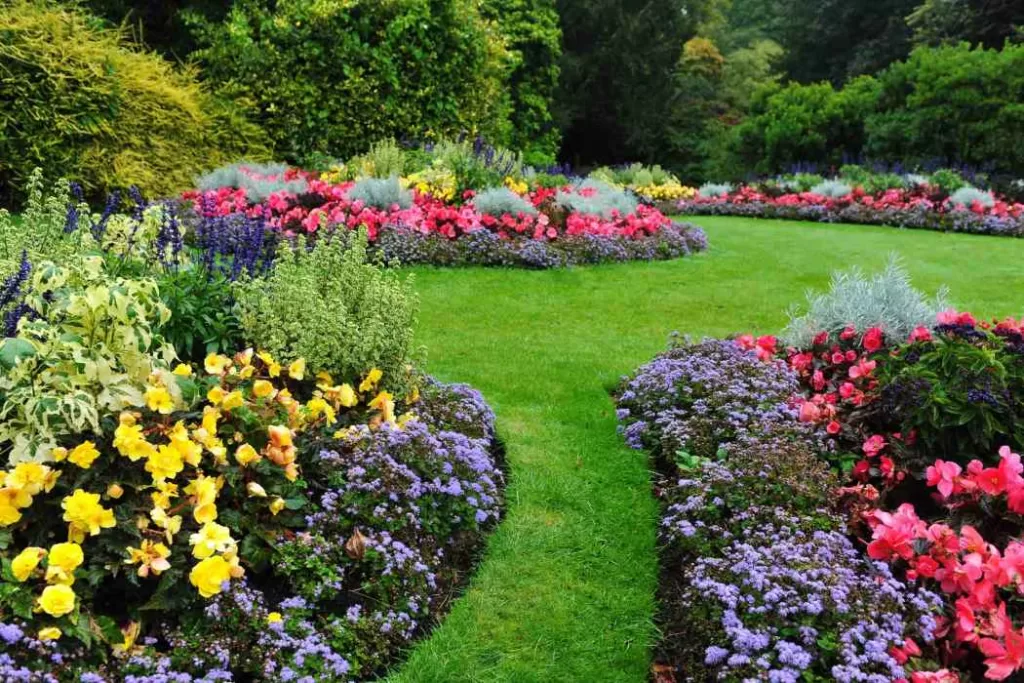
Boxwoods have stood the test of time, gracing gardens with their presence for generations. Their adaptability, ease of maintenance, and year-round beauty make them an invaluable addition to any landscape. We’ve explored the myriad ways in which these versatile shrubs can enhance your outdoor space, from providing formal elegance to creating natural, whimsical charm.
As you reflect on the gardening journey we’ve embarked upon, consider the stately boxwood as more than just a plant; it’s a living sculpture that can transform the character of your garden. Whether you’re crafting a secluded haven with a privacy hedge or designing a garden rich with varied textures and colors, boxwoods offer a sturdy canvas for your horticultural creativity.
So, take inspiration from the wealth of possibilities boxwoods provide and apply it to your own garden. Experiment with the different species and cultivars to find the perfect fit for your climate and aesthetic desires. Remember, gardening is an adventure, and boxwoods are one of the most reliable companions you can choose for this rewarding journey.
May your garden flourish and your boxwoods grow strong, bringing you joy through every season. Happy gardening!
Boxwoods thrive in well-drained soil with a pH between 6.0 and 7.0, situated in areas that receive partial to full sun. They can adapt to a variety of conditions but prefer consistent moisture without being waterlogged. Providing protection from strong winds and extreme cold can also help maintain their health and appearance.
Newly planted boxwoods require regular watering to establish roots — about 1 inch of water per week. Once established, they should be watered deeply when the top 2-3 inches of soil become dry. During hot, dry periods, additional watering may be necessary. Overhead watering should be avoided to prevent the spread of leaf diseases.
The best time to prune boxwoods is late winter or early spring before new growth starts. This allows the plant to heal quickly without risking frost damage to new cuts. However, for maintenance and shaping, light pruning can be performed throughout the growing season.
Boxwoods can tolerate partial shade but prefer at least four to six hours of sunlight daily. In deep shade, they may become less dense and more prone to pest problems. For optimal health and growth, a balance of sun and shade is recommended.
Boxwoods grow best in loamy, well-draining soil. They are adaptable to different soil types as long as they are not waterlogged. Amending soil with organic matter can improve drainage and nutrient availability, leading to healthier plants.
Boxwoods are generally considered deer-resistant due to their alkaloid content, which gives the leaves a bitter taste. However, in areas with high deer populations and scarce food sources, deer may still graze on boxwoods, especially the new growth.
Signs of a pest problem include visible insects, leaf discoloration, leaf drop, or blisters. Boxwood leafminer, spider mites, and psyllids are common pests. If you notice any of these signs, closely inspect your boxwoods and treat them with appropriate horticultural oils or insecticides.
Boxwoods are slow-growing shrubs, typically adding about 1 to 6 inches per year depending on the variety and growing conditions. Some dwarf varieties grow slower than larger ones. With proper care, they can steadily form dense hedges or decorative shapes over time.
Yes, boxwoods can be successfully grown in containers. Choose a container large enough to accommodate the root ball with extra space for growth, and ensure it has adequate drainage. Use high-quality potting soil and place the container in a location with appropriate sunlight. Regular watering and fertilization are essential since container plants can’t draw nutrients from the ground.
In regions with harsh winters, boxwoods can benefit from some form of winter protection. This can include mulching around the base to protect the roots, using burlap wraps to shield them from desiccating winds, and ensuring adequate hydration before the ground freezes. However, avoid covering boxwoods with plastic, as this can trap moisture and cause more harm than good.
Common diseases include boxwood blight, characterized by dark leaf spots and stem cankers, and root rot, often due to poor drainage. Volutella blight, another common issue, shows up as light brown lesions on leaves. To prevent these diseases, ensure good air circulation, proper planting techniques, and cleanliness in the garden. Infected plants should be treated with fungicides and sometimes removed to prevent the spread of disease.
Boxwoods can be toxic to pets if ingested. They contain alkaloids that can cause vomiting, diarrhea, and in severe cases, seizures or respiratory failure in animals. It’s recommended to keep pets away from these plants, especially if they have a tendency to chew on garden foliage.
To create a hedge, select a boxwood variety suitable for hedging and plant them in a straight line at a distance appropriate for their mature size. Water them well after planting and mulch the area to retain moisture. Prune the top and sides regularly to encourage bushy growth and shape them into a hedge. It’s important to start shaping early so they grow densely and evenly.
Boxwoods pair well with a variety of plants. Flowering perennials like lavender, catmint, and salvia provide color contrast and textural variation. For year-round interest, consider incorporating bulbs such as tulips or daffodils, which can offer spring blooms. Ornamental grasses and ground covers like ivy or periwinkle can add different heights and layers to the garden, creating a full and lush landscape around the structured boxwoods.
Monday 9 AM – 5 PM
Tuesday 9 AM – 5 PM
Wednesday 9 AM – 5 PM
Thursday 9 AM – 5 PM
Friday 9 AM – 5 PM
Saturday: By Appointment Only
Sunday: Closed